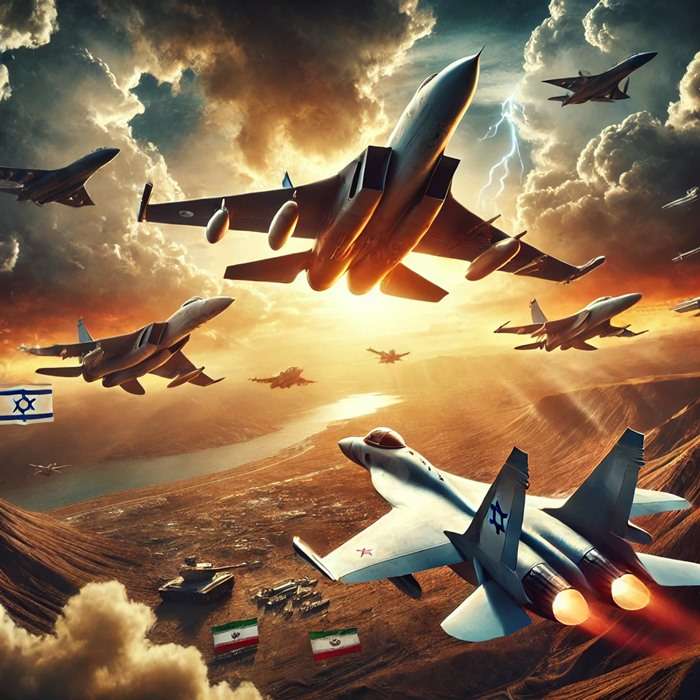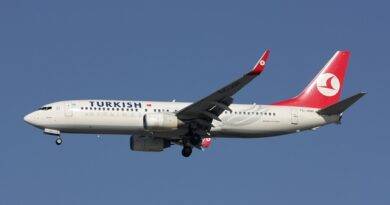The Rising Tensions Between Israel and Iran: A Clash of Air Power
The Middle East has long been a region fraught with geopolitical tensions, and the relationship between Israel and Iran stands as a significant focal point of this instability. The recent assassination of Ismail Haniyeh on July 31, 2024, has added fuel to the already smoldering conflict. This article explores the reasons behind the tension, provides a historical overview of Israel-Iran relations, and delves into the military capabilities of both nations, particularly focusing on their air forces. In the current global diplomatic context, understanding the air power dynamics between Israel and Iran is crucial for comprehending the broader implications of their rivalry.
The Assassination of Ismail Haniyeh
Ismail Haniyeh was a prominent figure in the Palestinian political landscape, serving as the leader of Hamas, an Islamist militant group governing the Gaza Strip. Haniyeh’s leadership was marked by a staunch opposition to Israel, advocating for Palestinian rights and resistance against Israeli occupation. On July 31, 2024, an Israeli airstrike in Tehran assassinated Ismail Haniyeh, the political leader of Hamas. Haniyeh was in the Iranian capital to attend the inauguration of President Masoud Pezeshkian when the predawn strike targeted his residence. While no country officially claimed responsibility, speculation and accusations flew, with many pointing towards Israel given its history of targeted killings of militant leaders.
Historical Relations Between Israel and Iran
Historically, the relationship between Israel and Iran has been complex and has evolved significantly over the decades:
- Pre-1979 Era: Before the Iranian Revolution, Iran and Israel enjoyed relatively cordial relations. Iran, under the Shah, recognized Israel and engaged in economic and military cooperation.
- Post-Revolution Period: The 1979 Islamic Revolution in Iran drastically altered the dynamics. The new regime under Ayatollah Khomeini adopted a vehemently anti-Israel stance, denouncing Israel as an illegitimate state and the “enemy of Islam.”
- 1980s and 1990s: Throughout these decades, Iran’s support for anti-Israel militant groups like Hezbollah in Lebanon and Hamas in Gaza solidified its adversarial position against Israel.
- 21st Century: The advent of Iran’s nuclear program and its expansion of regional influence have heightened Israeli concerns, leading to mutual antagonism and sporadic clashes, both direct and through proxy forces.
The Current Political and Global Diplomatic Context
The assassination of Haniyeh has brought the simmering tensions between Israel and Iran to a boiling point. Globally, this conflict is viewed through the lens of broader geopolitical struggles, particularly the influence of major powers like the United States, Russia, and China in the Middle East. The U.S., a staunch ally of Israel, has consistently opposed Iran’s nuclear ambitions and regional influence. Conversely, Russia and China have shown varying degrees of support for Iran, complicating the global diplomatic landscape.
Air Forces of Israel and Iran
The military capabilities of Israel and Iran, especially their air forces, play a crucial role in their strategic posturing and potential conflict scenarios. Here’s a closer look at their air forces:
Israel’s Air Force
- Technological Superiority: Israel’s Air Force (IAF) is renowned for its advanced technology and sophisticated aircraft, including the American-made F-35 Lightning II stealth fighters, F-16 Fighting Falcons, and F-15 Eagles.
- Operational Experience: The IAF has extensive combat experience, having engaged in numerous conflicts since Israel’s founding. This experience translates into highly skilled pilots and effective air tactics.
- Strategic Capabilities: Israel’s air force is capable of long-range operations, precision strikes, and intelligence-gathering missions, providing a significant strategic advantage in both defensive and offensive operations.
Iran’s Air Force
- Aging Fleet: Iran’s air force mostly has older aircraft. These include F-14 Tomcats and MiG-29 Fulcrums. It also has domestically produced fighters like the Saeqeh. These are generally considered inferior to modern Western counterparts.
- Recent Developments: Iran has been working to upgrade its air capabilities, including developing indigenous drones and ballistic missile technology, which poses a significant threat to Israeli defenses.
- Asymmetric Warfare: Iran’s strategy often relies on asymmetric warfare tactics, utilizing drones and missiles to compensate for its relatively weaker air force. This approach aims to exploit vulnerabilities in Israeli defenses and cause significant damage despite technological disparities.

Made by AI
Air Power Dynamics and Future Implications
The air power dynamics between Israel and Iran have profound implications for regional stability and potential conflict. Israel’s technological edge and operational experience provide it with a clear advantage in direct air engagements. However, Iran’s emphasis on missile and drone capabilities introduces a level of unpredictability and potential for asymmetric retaliation.
Global Diplomatic Perspective
From a global diplomatic perspective, the air power balance between Israel and Iran is critical. It influences the immediate security of the Middle East. It also affects the strategic calculations of major powers in the region. The U.S. will likely continue supporting Israel’s military capabilities. Iran may seek more assistance from Russia and China. This would help bolster its defenses and strategic assets.
Conclusion
The possibility of war between Israel and Iran is high. Events like the assassination of Ismail Haniyeh intensify this. Middle Eastern geopolitics are fragile. The air forces of both nations are key to their military strategies. They are crucial to potential conflict outcomes. Understanding their strengths and limitations is essential. This must be viewed within the broader political and diplomatic context. Doing so helps anticipate the future trajectory of Israel-Iran relations. It also impacts the overall stability of the region.


